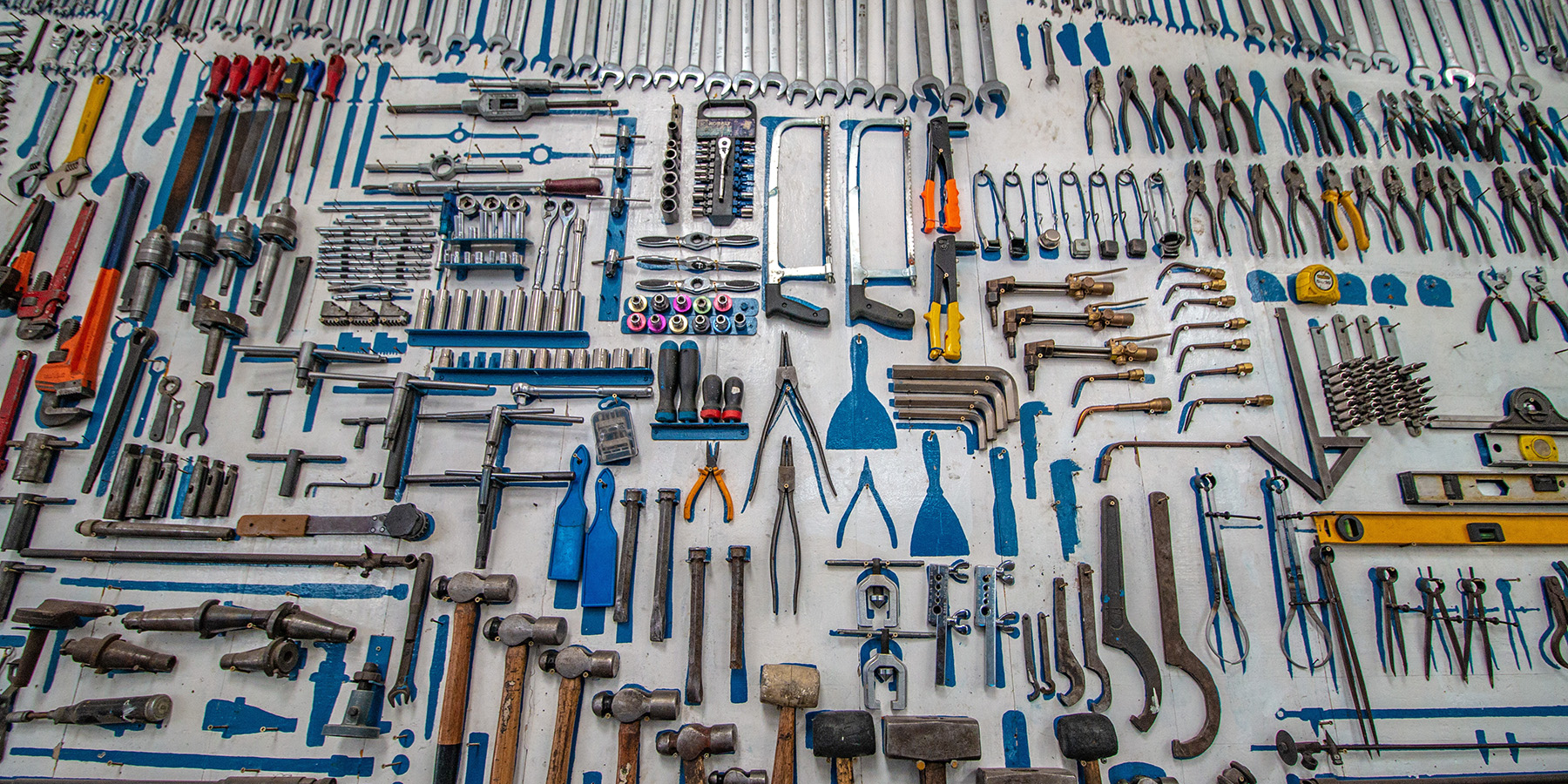A planned preventive maintenance (PPM) programme is a key part of any mature Facility Management strategy. But it’s a challenge knowing which assets to include in your PPM schedule and how much maintenance will be required to make it work. Here’s our 5 step guide to implementing a PPM that is efficient and cost effective.
1. Choose your assets wisely
Not every asset is a candidate for preventative maintenance. Not every failure can or should be prevented. In fact according to some sources 90% of equipment failure is random. It will happen regardless of the amount and frequency of servicing you perform. Equally, the cost of regular maintenance of some assets will easilyexceed the cost of replacing them altogether. And some equipment will be too close to their end of life to offer significant return on investment from inclusion in a PPM programme.
But it’s a fact that the failure of some assets will matter more than others and you should focus your attention on these when you’re setting up a PPM programme if it’s going to make a difference to your bottom line.
Here are some key questions that will help you decide what assets should be a part of your PPM programme:
- Which assets are essential to your operations - where could equipment failure cost you the most - in terms of time, money and inconvenience?
- Which equipment is regularly breaking down right now?
- Is regular maintenance recommended by the manufacturer / professional body or required by law? For example, what are the SFG20 or CIBSE Guide recommending?
- What assets cost you the most to repair or replace?
2. Dive into the data
Look at your current maintenance records to confirm which assets are costing the most in terms of downtime and corrective maintenance effort to keep up and running. If you’ve got a CAFM or CMMS these maintenance records should be accessible and detailed enough to help you understand the source of breakdowns. Your reporting suite should also help you identify trends and patterns of failure that could suggest areas of focus for a PPM strategy.
So, analyse available data, do your calculations, figure out where the preventive maintenance resource will be best expended and where you’ll see maximum ROI by putting PPM in place. You should factor in the potential cost of compliance infringements in deciding what assets should be focused on as part of your PPM, some asset failures can have serious legal consequences if statutory negligence can be proved.
3. Define required maintenance routines
When you’ve decided which assets will benefit most from a PPM approach, you need to gather all the information that’s going to help you focus your maintenance resource effectively.
Each piece of equipment is different and will require a different amount of PPM in order to be kept in top condition. Some equipment will need a single regular check to ensure it’s functioning effectively. Some parts of a machine may require weekly greasing and cleaning, other components will need monthly inspections. And the whole machine may need a complete annual service to keep it in good working order.
There are four sources of information that will be key in developing these routines.
(i) The manufacturers' manuals
Manufacturers instruction manuals will contain
- Schedules for required maintenance
- Details and projected lifespan of critical spare parts
- Instructions for basic maintenance work
All of which can form the basis of the PPM routine you create.
(ii) Your own data
As mentioned above any data you’ve been gathering throughout the asset lifecycle will also help you figure out what an effective maintenance routine will look like. If you’ve been capturing this data in a CAFM it should be easier to extract and interrogate. A good CAFM or CMMS will have required engineers to record the problems they’ve encountered, the fixes they’ve carried out and whether they’ve been successful.
(iii) Engineer experience
Talk to the people who actually do the work right now. Engineers possess the local or ‘tribal knowledge’ that could make the difference between a PPM process that works in theory and one that actually works in practice. They know the problems particular pieces of equipment encounter, what wires habitually come loose, what parts become clogged, need regular cleaning and a host of other issues. You may never have captured this detail before, but having these conversations as you prepare a PPM process will help you create a much more effective schedule in the future.
(iv) Professional Bodies
Professional bodies like the Chartered Institution of Building Services Engineers (CIBSE) and the Building Engineering Services Association (BESA) offer essential resources for Facility Managers setting up PPM programmes.
BESA’s SFG20 is the recognised industry standard for building maintenance specifications. Subscribers to the standard have online access to hundreds of maintenance schedules covering many equipment types, enabling them to create and customise schedules to build bespoke service models for the buildings and assets they manage. Each schedule displays the maintenance tasks required, the frequency level tasks should be performed at and the skills required to carry out the work. The standard includes colour coded ratings to help distinguish which work you have a legal obligation to complete and which tasks are optional. This data can be downloaded and APIs are available to port schedules into CAFM systems.
The CIBSE Guide M is the industry best practice guidance for the management and maintenance of engineering services in a building. It describes how to implement preventative and other maintenance techniques to achieve required results.
4. Automate the programme
When you’ve decided which assets you want to include in a PPM schedule and defined the right maintenance routine for each, you’ll need to work out and execute a schedule of reminders and notifications that can make the programme work for real. Trying to set up this kind of schedule using a spreadsheet and a combination of outlook reminders and emails can easily get messy. And it’s not a sustainable or scalable solution for most businesses.
Instead, a PPM module within a CAFM or CMMS will help you set up the automated workflows you need to ensure the right maintenance activity is done at the right time, by an appropriately skilled engineer.
5. Track and optimise
You’re not going to get it right, first time. You may end up over or underestimating the amount of maintenance each asset needs. This could lead to increased costs with no reduction in reported problems and/or no visible return on investment. That’s why you need the tools that can give you the insight and flexibility to monitor results and tweak your approach to get better results.
But if you haven’t used a dedicated software tool linking up maintenance records with financial information, monitoring the success and ROI of your PPM programme is going to be difficult or impossible to achieve.
With the right CAFM tools, however, you can ask all the right questions about your PPM activity to ensure you’re focusing on the right assets and are not wasting time and money with an overzealous approach.
The software tools you’re using should be able to show you how much you are spending on preventive vs reactive maintenance, and if that balance of expenditure is shifting over time. It will give you the insight you need to determine if you need to reduce or increase the amount of attention you’re giving to specific pieces of equipment, helping you develop the most cost effective approach to extending your asset lifecycle.
Effective PPM is a team effort
Getting PPM right is a delicate balancing act. But moving from a reactive to a proactive approach, can represent a big cultural shift for your team that they may struggle with. This is where all your efforts to become more strategic may come unstuck. Some teams can feel overwhelmed or demotivated by the sudden appearance of preventive tasks in their schedules on top of their existing work. They can also resent all the new admin tasks that can come with a PPM, for example, documenting all the PPM tasks that are carried out and the outcomes of their activity.
Choosing a CAFM system that makes it easy and intuitive for your team to record the work they do, can help them get on board quickly with these new maintenance routines. Meanwhile, involving engineers from the beginning in identifying suitable equipment for PMM and defining maintenance routines will give them ownership over the process and make it more likely the tasks will be completed and done in a cost-effective way.
A PPM programme should help you reduce maintenance costs, extend asset lifecycle, minimise compliance issues and create a culture of reliability across your organisation. But it’s not something you can just ‘switch on’ overnight. You need the insight, the tools and the support across an organisation to define and implement an effective PPM programme - and you need the ability to nurture and optimise your programme to help it bring ROI over time.
.png?width=680&height=700&name=Ai%20page%20module%20(2).png)



